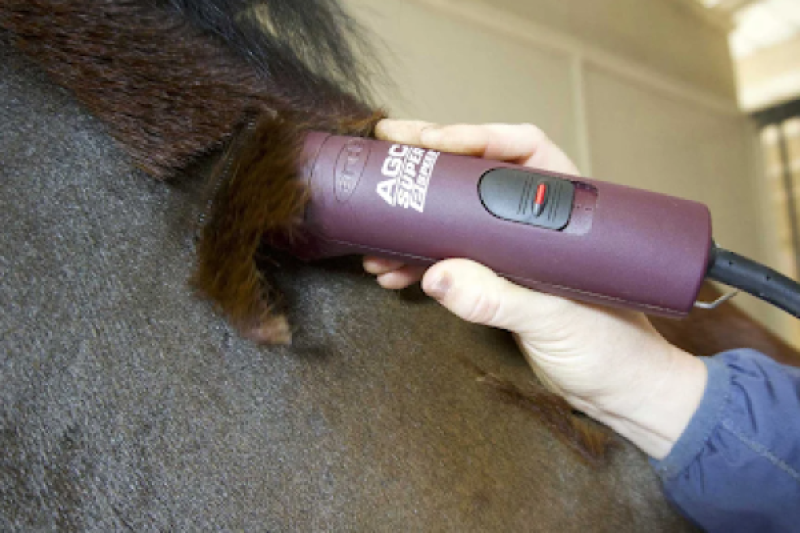Shear Perfection: A Guide to Body Clipping
Body clipping helps your horse stay clean and comfy in work. Learn how to prep, what tools you need, and which clip styles make sense for your horse’s job, coat, and living situation.

If you’ve been around horses long enough to know that “fluffy winter coat” really means “mud magnet that takes six years to dry after a ride”, you’re in the right place. Body clipping isn’t just about looks, it’s about keeping your horse comfortable, healthy, and ready to work without overheating.
Why Clip at All?
Sure, your horse looks like a majestic yak in winter… but that fluff isn’t helping when you’re schooling over fences in January. A body clip helps your horse:
- Stay cool during hard workouts
- Dry faster after rides (goodbye endless currying sessions)
- Avoid skin issues caused by trapped sweat
Clipping means you’ll need to blanket responsibly also, since your horse no longer has their natural insulation.
Pick Your Clip Style
Not all clips are created equal. You’ve got options ranging from a light trim to the full spa treatment:
- Trace Clip: Great for light to moderate work; removes hair along the neck and belly.
- Hunter Clip: Leaves the legs hairy for protection, clips the rest.
- Full Body Clip: For the show horse or hard worker who’s indoors most of the time.
- Blanket, Irish or Strip Clip: Aren’t more options always better? See the visual below!
Choose based on workload, living situation, and whether your horse secretly enjoys wearing multiple wardrobe changes a day.
What You Need
Clippers: The Heart of the Operation
At the very core, you need good clippers. Beginners should consider investing in two types:
- A multi-purpose clipper for most of the body
- A smaller, detail clipper for sensitive or hard-to-reach spots
- Popular brands in the U.S. include Andis, Wahl, Oster, and Lister. For example, the Andis AGC Super 2-Speed works great for general use, while the Wahl Show Pro Plus excels on details. The best tip? Try a few and see what feels right. Many stores offer returns if they don’t work for what you need..
Understanding Clipper Blades
Blade Numbers and Hair Length
Generally, lower blade numbers leave longer hair, while higher numbers give a closer cut. Here’s a quick guide:
Blades like the T-84 and #10 are favorites for body clipping, while #30 and #40 are great for precise jobs like clipping inside ears or veterinary work.
Must-Have Clipper Accessories
Your clippers need care and maintenance to perform their best:
- Extra Blades: Have multiple blades on hand so you can swap them out during clipping.
- Blade Spray/Cooling Spray: Clipper blades heat up quickly; spraying them regularly cools and lubricates the blades. When in doubt, use more!
- Clipper Oil: This reduces friction and extends blade life, plus it helps your clipper’s motor run smoothly. Read the directions that came with the clippers and be sure to oil all of the necessary spots!
Extras That Make Life Easier
Some items might not be essential, but they’ll improve your clipping game:
- Headlamp: Barn lighting isn’t always ideal, and a headlamp frees up your hands and helps you see fine details.
- Protective Suit: Horse hair can be super itchy. A disposable suit, like a Tyvek suit, keeps hair off your clothes and skin. Or at minimum, wear something that doesn’t attract hair, like knits, and take the clothes off in your laundry room. Be aware, you may never get the hair out of some clothing.
- Extension Cord: Most clippers are corded, so an extension cord gives you flexibility to clip wherever. You can also splurge on cordless clippers. Make sure you have back up batteries that are fully charged.
- Step Stool: Don’t rely on the barn’s supplies, bring a sturdy stool to reach tricky spots, especially on tall horses.
Clipping Day Game Plan
- Bathe and Dry: Start with a clean, completely dry horse. Dirt + clipper blades = disaster.
- Pick Your Spot: Well-lit, quiet, and safe. Your horse will thank you (and so will your back).
- Start in the Least Ticklish Zone: Usually the shoulder. Build trust before hitting the belly or flanks. Always clip AGAINST the hair growth.
- Work in Long, Smooth Strokes: Overlap slightly to avoid racing stripes.
- Keep the Blades Cool: Hot blades are uncomfortable for your horse and dull faster.
Pro Tip: If your horse is fussy, work in short sessions with breaks for scratches and treats.
Aftercare is Key
Once your horse is sleek and shiny:
- Blanket Appropriately: No natural fluff = no built-in warmth.
- Clean Off Loose Hairs: A soft brush or towel works wonders. A bath is also great!
- Admire Your Work: Seriously, take a photo. Post it on THQ. You earned it.
Body clipping takes patience and practice. Even pros didn’t nail it the first time. Don’t stress about tiny uneven patches, they’ll disappear in a week or two. Your horse doesn’t care about perfect lines; they care about comfort. Need more help with body clipping? Join the conversation on TurnoutHQ, where your horse questions meet community wisdom!
Sources
Body Clipping Horses: Clip Patterns & Complete Guide | Riding Warehouse
Equine Clipping 101: Intro to Body Clipping for the Beginner - horsegrooms.com

